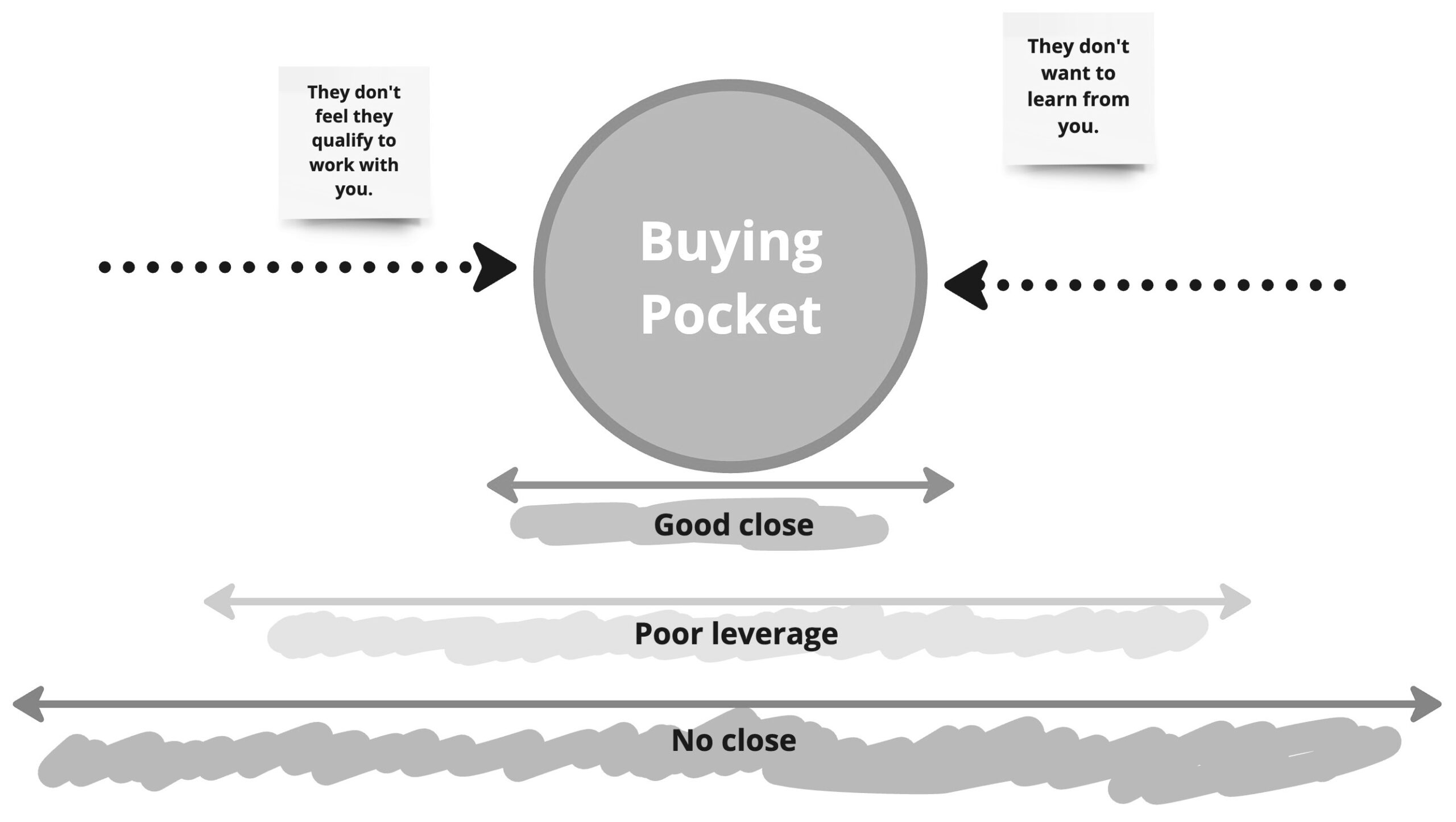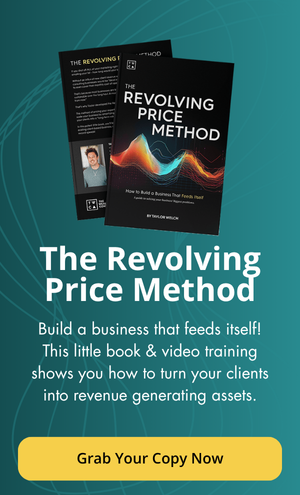Close More Deals By Understanding This
Most coaches and consultants don’t struggle in sales because they’re bad at what they do. In fact, many of them are brilliant. They’ve got results, testimonials, frameworks that actually do work (when implemented), and programs that are designed to genuinely help a lot of people.
So why is the effective average closing rate across most client-based businesses around 20% (according to Hubspot).
Answering that is a bit trickier than you might think. It has hardly anything to do with tactical prowess, though that does factor in.
Sales isn’t a game of persuasion. It’s a game of perception.
If you don’t understand the internal psychology of your buyer, you’re basically showing up to a chess match with a deck of Uno cards.
Mastering 3 aspects of your buyer’s thought processes will increase your effectiveness, and make each client you close HAPPY to hand over their credit card (without all the crazy runaround):
- The two “versions” of every prospect
- The “buying pocket” that lies between those two versions
- The two mental states that BLOCK sales
We’re about to break each aspect down for you. Your job is to pay attention and implement.
Got it? Alright, let’s go.

Defining the Buying Pocket
Every human on a sales call is in conflict. That’s because there are two versions of them that are at war.
Imagine two versions of your buyer standing on opposite sides of a canyon.
Version 1 is the “Now Version.” This version of the prospect is experiencing some sort of pain, discomfort, or obstacle that is keeping them from success. Stuck, frustrated, and exhausted.
Version 2 is the “Future Version.” This is the proud, thriving, free, and fulfilled version. This is what they imagine when they imagine success.
The “Buying Pocket” is the narrow psychological window where belief meets urgency. It’s the place where their desire to become Version 2 outweighs their fear of leaving Version 1. Miss that window, and you’ll hear “I need to think about it” until your calendar’s as dry as the Sahara.
Many entrepreneurs make the mistake of trying to bully or strong-arm someone INTO the pocket who is clearly outside of it. This is where the vast majority of sales are lost.
It is possible to help lead someone into the pocket if they are out of it, but it is never (repeat… NEVER) done via force. Remember, your job on a sales call isn’t actually to make the sale. It’s to help the person on the other end of the phone make the decision that is best for THEM.
If you want some pointers for how to ethically lead a sales call while not violating your responsibility to your prospect, read this. It will clear up a lot for you.

Three Reasons Prospects BUY
We’ve established that there are two versions of the prospect. But, how do we shepherd someone through their journey from one to the other.
To help someone move from Version 1 to Version 2, three things need to lock into place:
- They crave a better future (one that your offer directly supports).
- They believe staying stuck is riskier than moving forward.
- They trust you as the person to help them make that leap.
It’s not about the bells, whistles, bonuses, or countdown timers. That’s all external pressure, and isn’t nearly as effective as simply helping someone believe they can win… and that doing it alone is the real gamble.
Create internal pressure for the prospect. Not external.
NOTE: There are some instances where external pressure is a valid sales tactic, such as “pulling the offer” off of the table, force delaying a purchase when a prospect is not ready or too leaned out, or leveraging an upcoming price increase to help the customer get out of their own way. But these should be used cautiously, and you need to understand why you’re doing it.
Keep reading to the end of the article to see a cool resource we have for learning some of the nuances here.
Two States That Block the Sale
There are only two mindsets that sabotage the close:
- Too little belief: “This won’t work for me.”
- Too much belief: “I don’t need help. I’ve got this.”
If your prospect is too beaten down, they won’t move. If they think they’re already crushing it, they won’t see the value. Your role is to gently (or firmly) adjust their state, showing them what’s possible and what’s at stake simultaneously.
Make no mistake, this is a delicate dance, and one or two missteps at critical moments will sabotage the sale. The key is to take notice of a handful of things that will help inform you of which state your prospect is in:
- Too little belief: Prospect will appear timid, fearful, or leaned out (disinterested). When pressure is applied, they will default to excuses or claim that they’ve tried everything you’re saying and it hasn’t worked for them. These types of prospects also have major hang-ups around investing in themselves. The minute that money is mentioned, they will change their tone and posture and get extremely uncomfortable. Uncertainty creates anxiety around investment.
- How to show up: First, widen the “gap” between where they are and where they want to be. If the gap is not big enough, it will be near impossible to get them out of being stuck. One great way to widen that gap is to push their goals up higher and bigger, making it all but impossible that they would magically stumble onto the solution on their own. Then inject hope (lifeblood of any sales call), by showing them a clear process.
- Too much belief: The hallmark of someone in this state is ego and pride. Their body language will display a sense of superiority, and they will bristle (even becoming angry at times) at any insinuation that they can’t do this “on their own.” They will often point to inflated numbers or past successes (completely ignoring their current situation) as a way to prove that they don’t need help.
- How to show up: Challenge their assumptions about success (gently or firmly depending on the prospect) and zoom out to their ultimate goals – taking the focus off of the future self and onto the current version of themselves (which is stuck). Your job is not to get into an argument with them or try to humble them… this approach only makes their defenses go up higher. Instead, it’s to lean out from them a little, move more into your “gatekeeper” energy, and shift the frame from them asking “why should I work with you,” to YOU asking, “why should WE take YOU as a client?”
Want to hear how top closers navigate these mental states in real-time? Plug into our SALES PSYCHOLOGY podcast episode for more insight.

Winning At Sales
Sales isn’t about being slick. It’s about seeing through the surface, diagnosing accurately, and guiding someone to a decision that serves them.
And if you want the full manual on doing this ethically, effectively, and sustainably, grab a copy of Winning at Sales. It’s not just a sales book. It’s a mindset shift disguised as a handbook.
Let’s build better buyers and better businesses. One conversation at a time.

